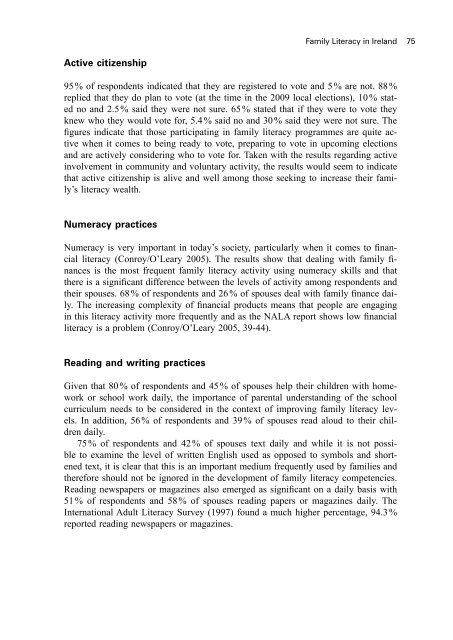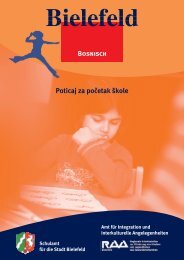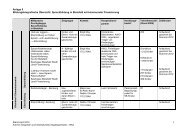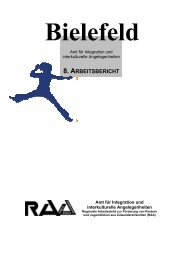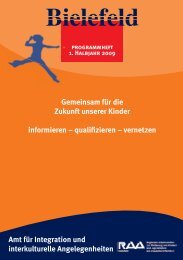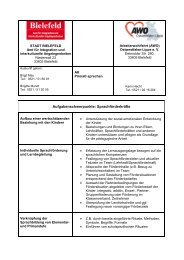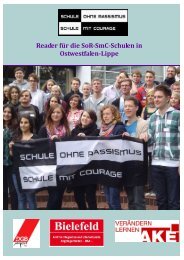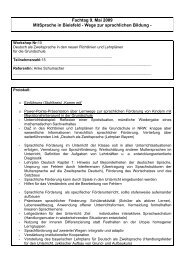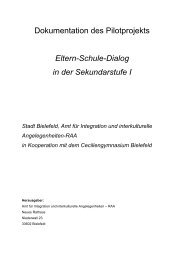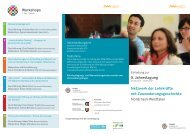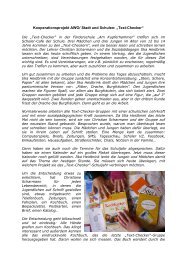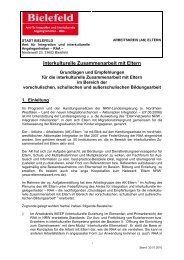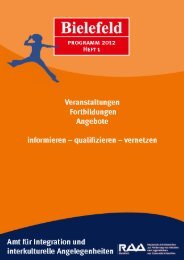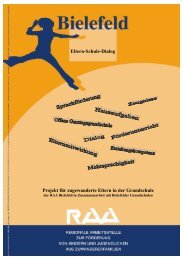Funktionaler Analphabetismus im Kontext von Familie und ...
Funktionaler Analphabetismus im Kontext von Familie und ...
Funktionaler Analphabetismus im Kontext von Familie und ...
Erfolgreiche ePaper selbst erstellen
Machen Sie aus Ihren PDF Publikationen ein blätterbares Flipbook mit unserer einzigartigen Google optimierten e-Paper Software.
Family Literacy in Ireland 75<br />
Active citizenship<br />
95 % of respondents indicated that they are registered to vote and 5 % are not. 88 %<br />
replied that they do plan to vote (at the t<strong>im</strong>e in the 2009 local elections), 10 % stated<br />
no and 2.5 % said they were not sure. 65 % stated that if they were to vote they<br />
knew who they would vote for, 5.4 % said no and 30 % said they were not sure. The<br />
figures indicate that those participating in family literacy programmes are quite active<br />
when it comes to being ready to vote, preparing to vote in upcoming elections<br />
and are actively considering who to vote for. Taken with the results regarding active<br />
involvement in community and voluntary activity, the results would seem to indicate<br />
that active citizenship is alive and well among those seeking to increase their family’s<br />
literacy wealth.<br />
Numeracy practices<br />
Numeracy is very <strong>im</strong>portant in today’s society, particularly when it comes to financial<br />
literacy (Conroy/O’Leary 2005). The results show that dealing with family finances<br />
is the most frequent family literacy activity using numeracy skills and that<br />
there is a significant difference between the levels of activity among respondents and<br />
their spouses. 68 % of respondents and 26 % of spouses deal with family finance daily.<br />
The increasing complexity of financial products means that people are engaging<br />
in this literacy activity more frequently and as the NALA report shows low financial<br />
literacy is a problem (Conroy/O’Leary 2005, 39-44).<br />
Reading and writing practices<br />
Given that 80 % of respondents and 45 % of spouses help their children with homework<br />
or school work daily, the <strong>im</strong>portance of parental <strong>und</strong>erstanding of the school<br />
curriculum needs to be considered in the context of <strong>im</strong>proving family literacy levels.<br />
In addition, 56 % of respondents and 39 % of spouses read aloud to their children<br />
daily.<br />
75 % of respondents and 42 % of spouses text daily and while it is not possible<br />
to examine the level of written English used as opposed to symbols and shortened<br />
text, it is clear that this is an <strong>im</strong>portant medium frequently used by families and<br />
therefore should not be ignored in the development of family literacy competencies.<br />
Reading newspapers or magazines also emerged as significant on a daily basis with<br />
51 % of respondents and 58 % of spouses reading papers or magazines daily. The<br />
International Adult Literacy Survey (1997) fo<strong>und</strong> a much higher percentage, 94.3 %<br />
reported reading newspapers or magazines.


